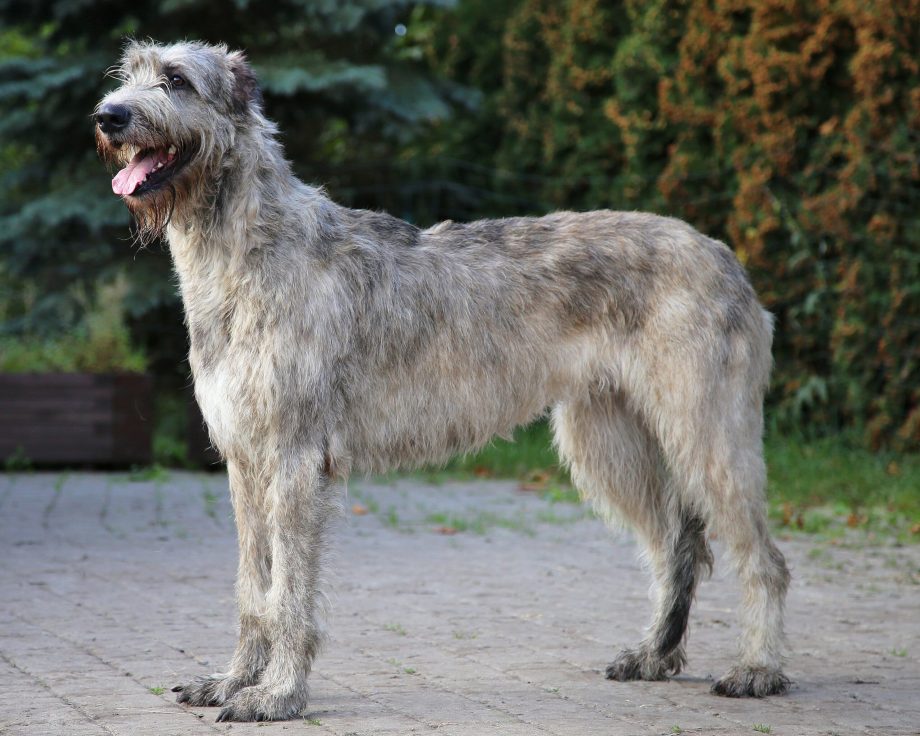The Irish Wolfhound is the gentle giant of the dog world. The tallest of all the dog breeds it can reach up to 90 cm tall and was developed as a sighthound to pursue large game at high speed, as well as to act as a guard dog and hunter of wolves.
Their distinguishing features are, of course, their substantial size, and their tough coat and wiry facial hair. Their coat comes in many colours including grey, brindle, red, black, and fawn. They are extremely agreeable and peaceful dogs, which are calm and dignified, and patient around children. This makes them wonderful family dogs, who are great companions to children. They also get on with other dogs and even do well with cats and other household pets if raised with them. They really do enjoy human company and will be miserable if left alone for too long. Around the home, they can be very laid-back, seemingly never in a rush, but dont be deceived, this is a breed that needs to get outdoors and stretch those long limbs. They require at least two hours of exercise a day, which should include lots of opportunities to run. Due to their huge rate of growth as a puppy, exercise should not be too vigorous until they reach adulthood. Irish Wolfhounds make terrific family pets, but will only suit an owner that can offer lots of indoor and outdoor space.

History
Irish Wolfhounds have an ancient history with large dogs like the Irish Wolfhound reportedly used in Ancient Rome as gladiators, to fight lions and bears. They made their way to Ireland alongside sailors and were crossed with Mastiffs to produce a dog of gigantic size with the speed and strength to guard against wolves which were a great threat to livestock. With the fall in the number of wolves and the Irish famine, the number of Irish Wolfhound greatly dwindled almost to the point of extinction. Todays wolfhound is descended from the last remaining Irish hounds crossed with the Scottish Deerhound and Great Dane amongst others.





